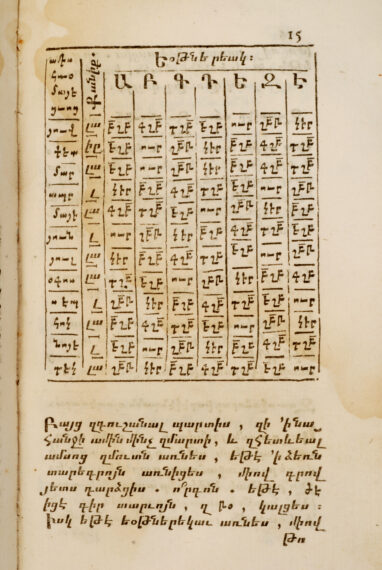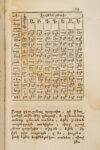BOOK OF ASTROLOGY
Printed, 1748. Venice Printed by Anton Boapoli
BOOK OF ASTROLOGY
Printed, 1748. Venice Printed by Anton Boapoli
Imprimerie Anton Boapoli
Second edition made under the patriarchate of Archbishop Sarkis of Constantinople.
Engraving of the geocentric system representing the 7 planets around the Earth, including the sun. This system has obviously been denied since the 17th century, but was imposed by the church. The signs of the zodiac are the background of the sky determining the horoscope according to the position of the planets. Below, a view of Rome engraved by Luccherini.
Owing to the sacred value attributed by the Armenian people to the handwritten book, the printed book did not supersede it until the 19th century, almost three hundred years after the first publication of a book which came off the press in Venice in 1511. In its early days the printed book was, unlike manuscripts, exclusively the work of the diaspora. It was in Europe that the first works were published, initially in Venice and later in Amsterdam, where the first Bible was printed in 1666. The texts published in the 16th and 17th centuries were sometimes of religious, sometimes historical, and sometimes scholarly nature.
In the 18th century, Venice underwent a revival thanks to the considerable work of Abbot Mekhitar of Sebaste. The typography workshop on the island of San Lorenzo, opposite Venice, published a number of classical Armenian works, as well as translations of European literary works for use by students, historical and philological studies, and the 1837 dictionary, which is still the authoritative reference today.
It was only in the 19th century, however, that printing really took off with the secularization of culture which, until then, had been disseminated under the quasi-monopoly of the Church.
The replacement of the classical language by modern Armenian and the development of the press completed this evolution.
This heralded the birth of modern literature.
The printed book is no longer just an edition of the manuscript.
It now became an instrument of modern thought.



